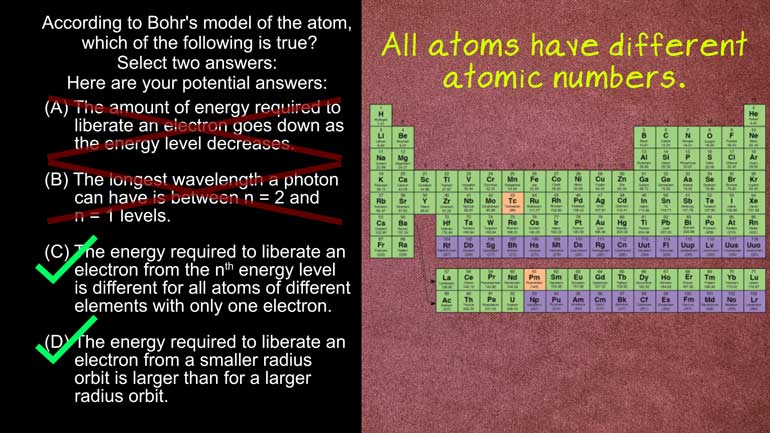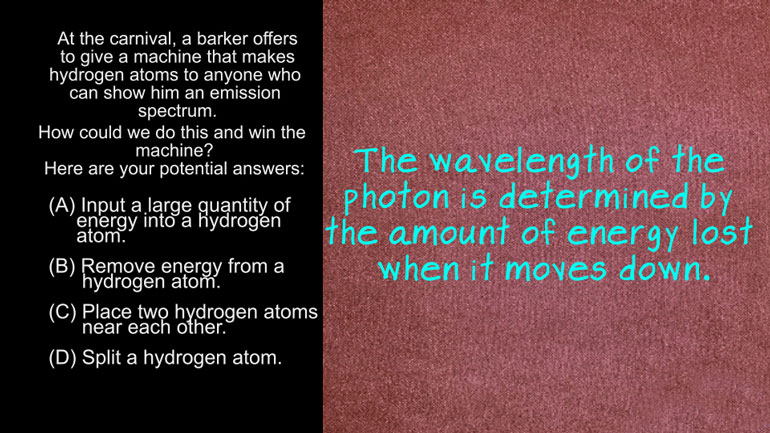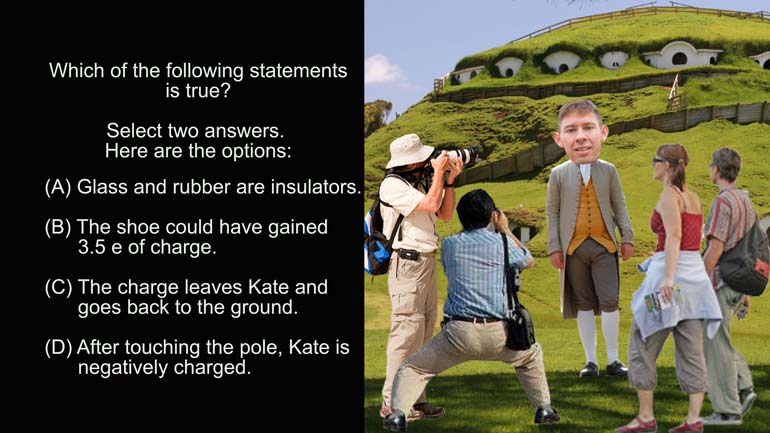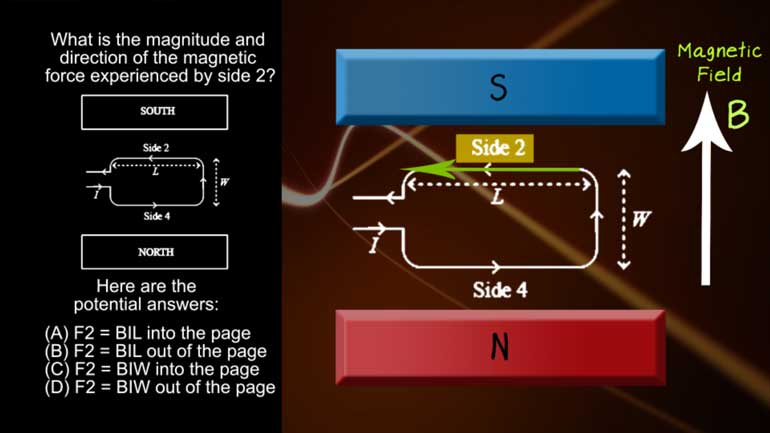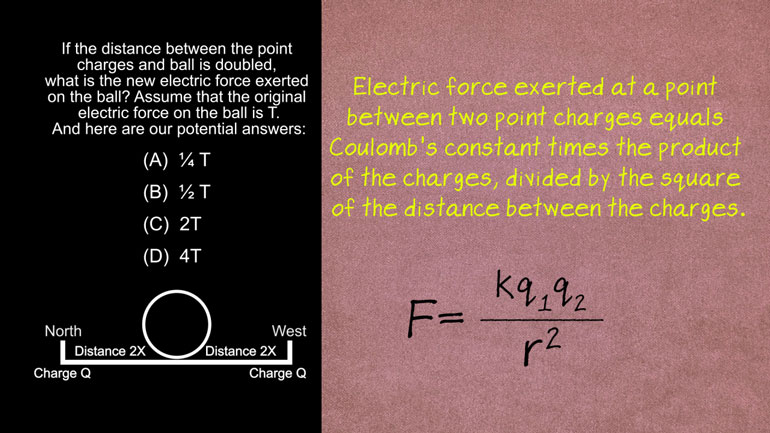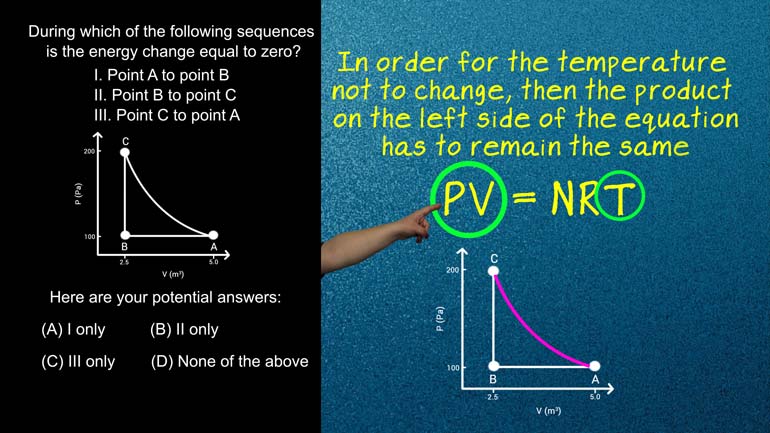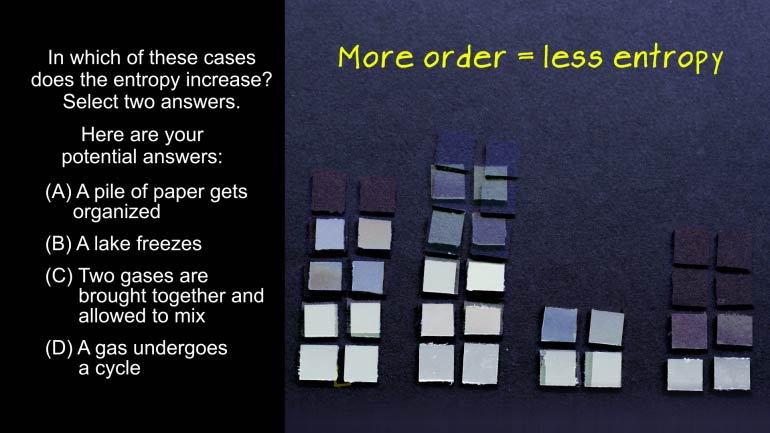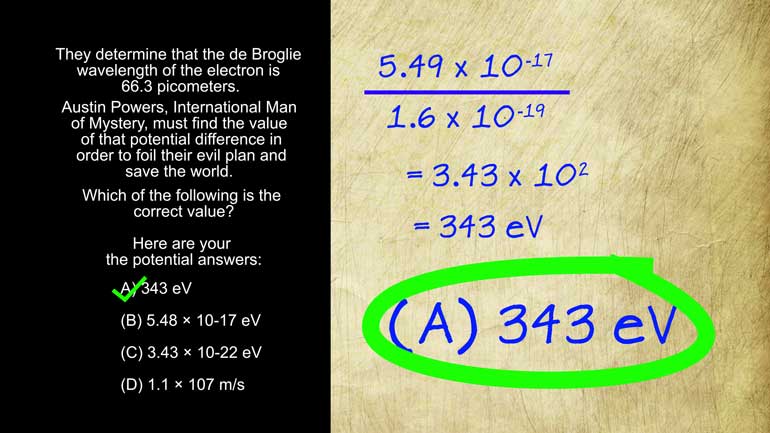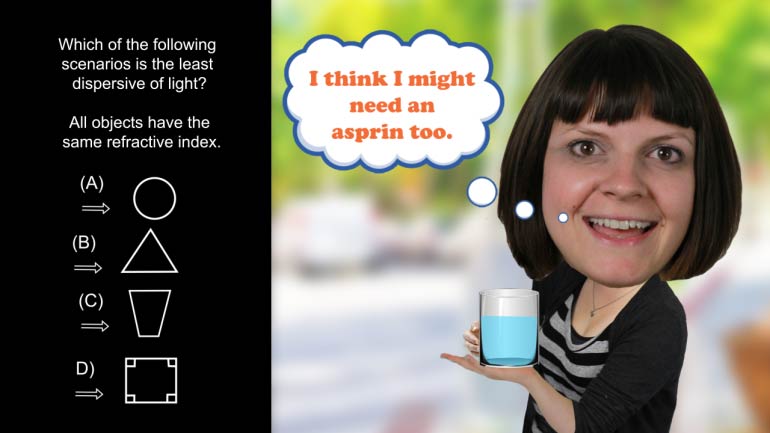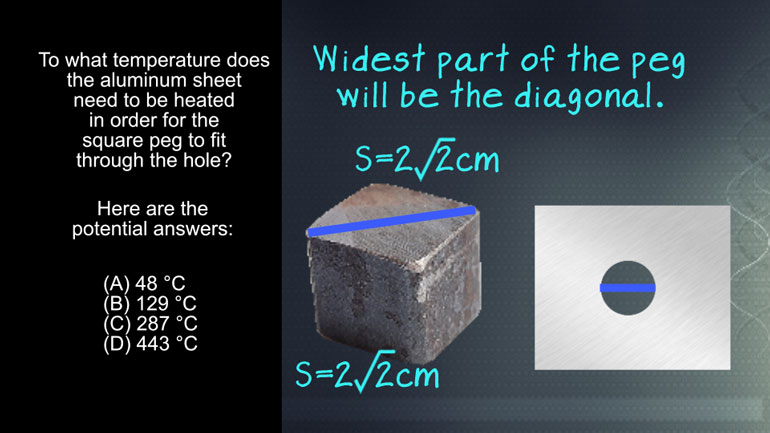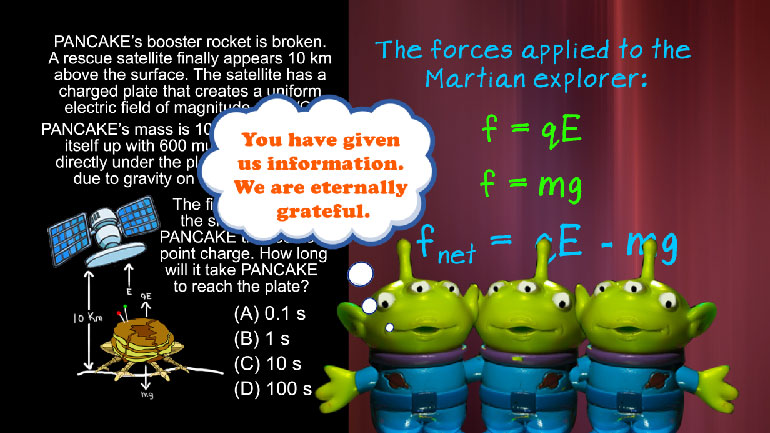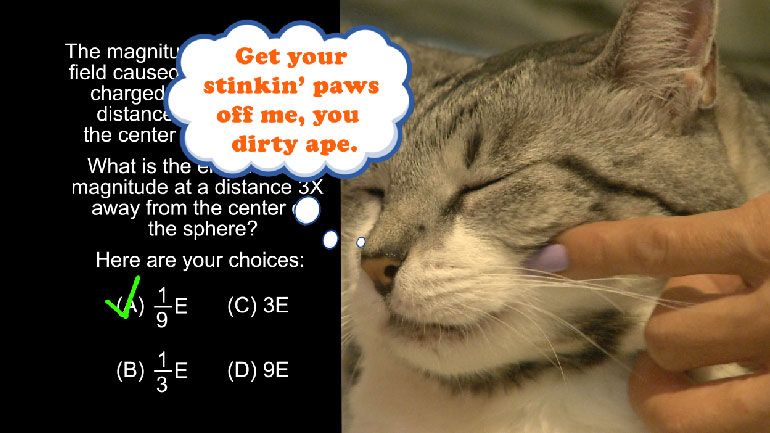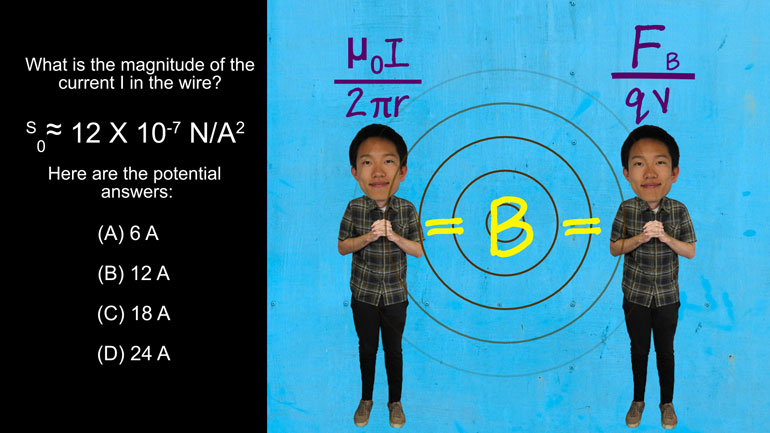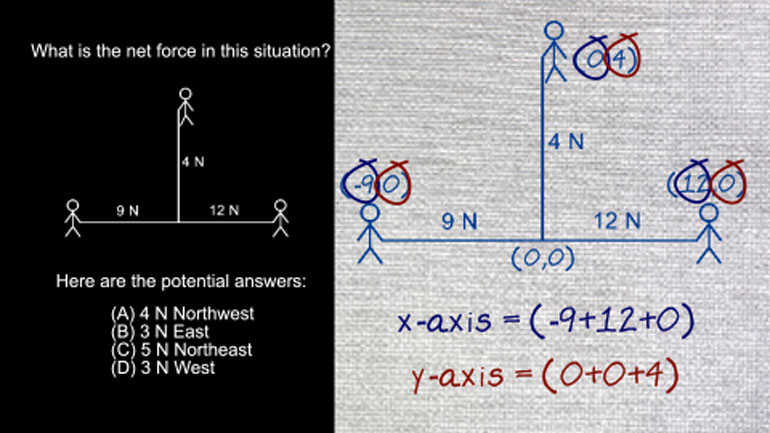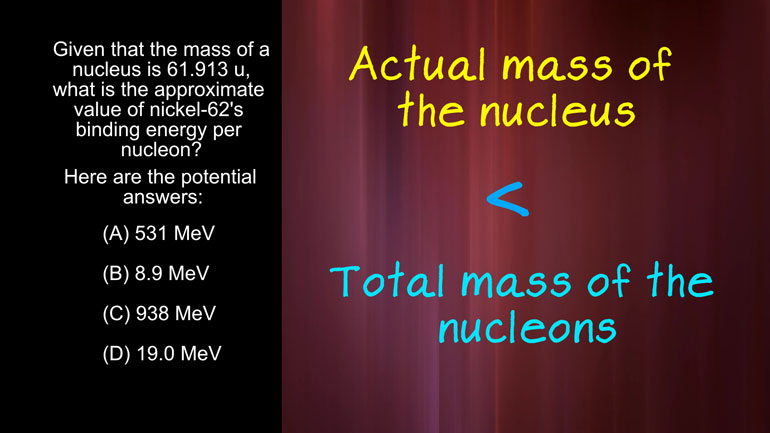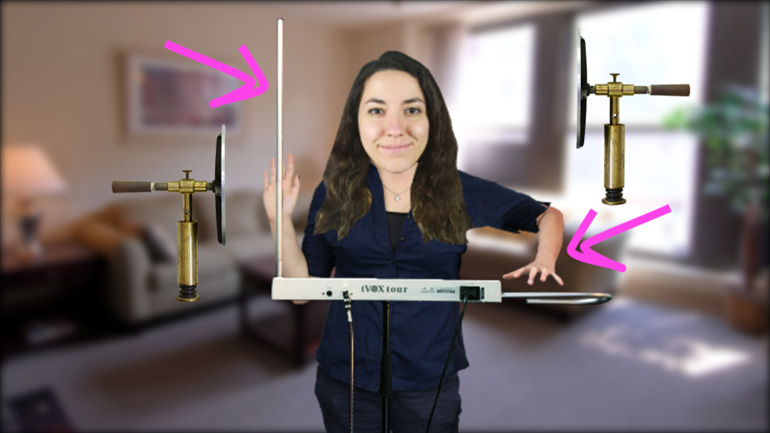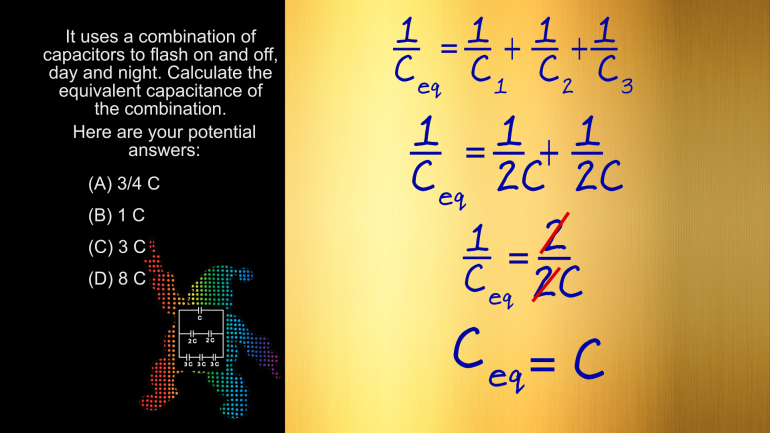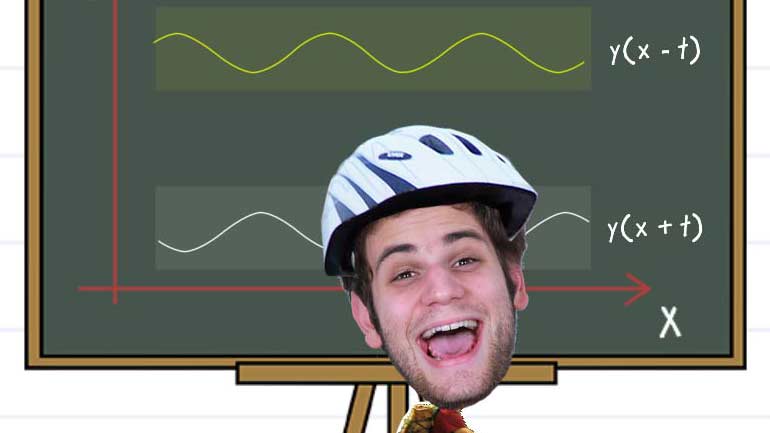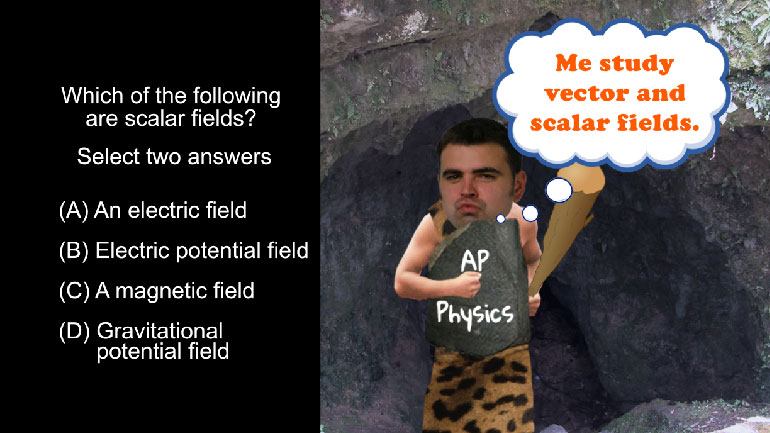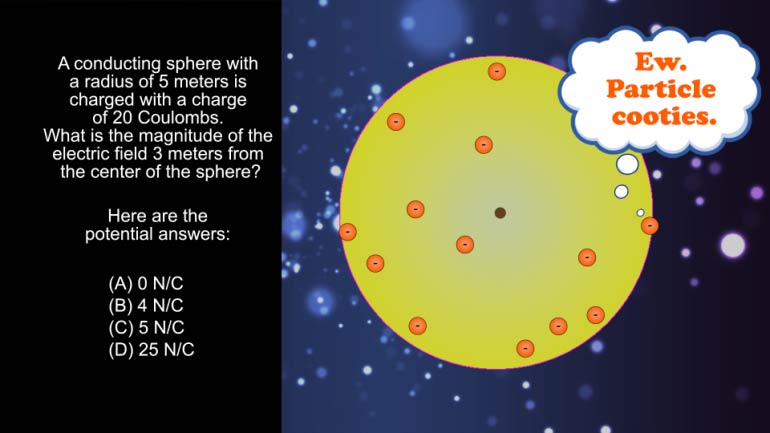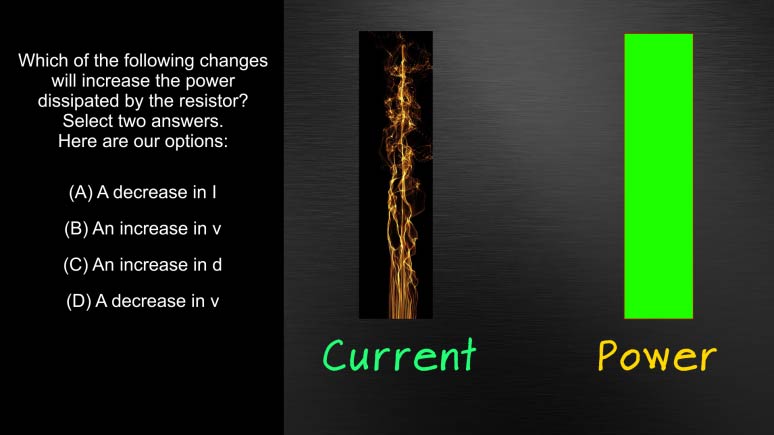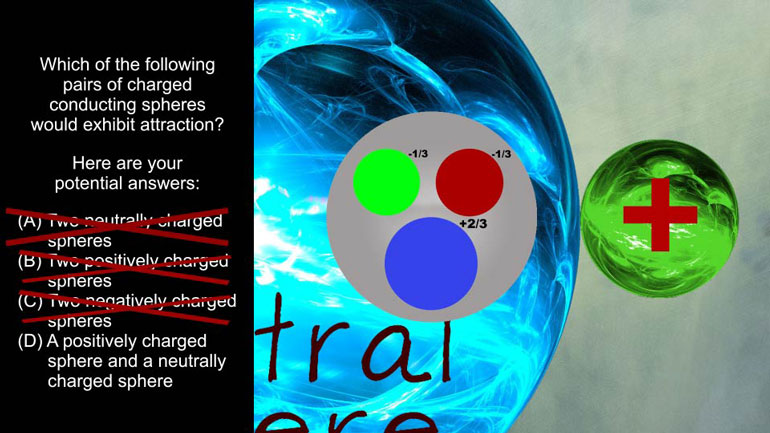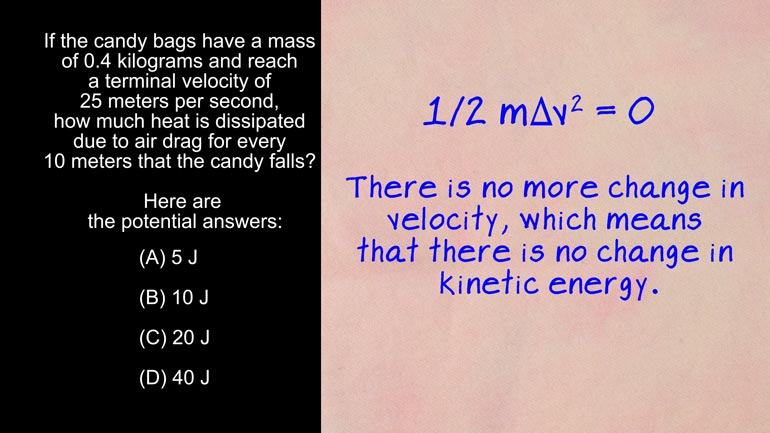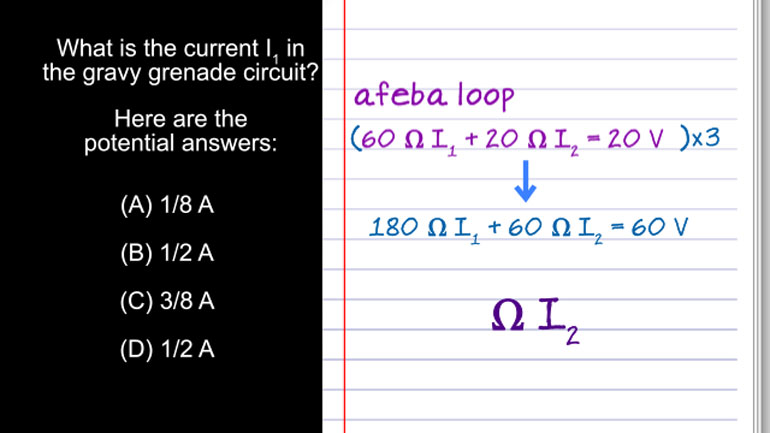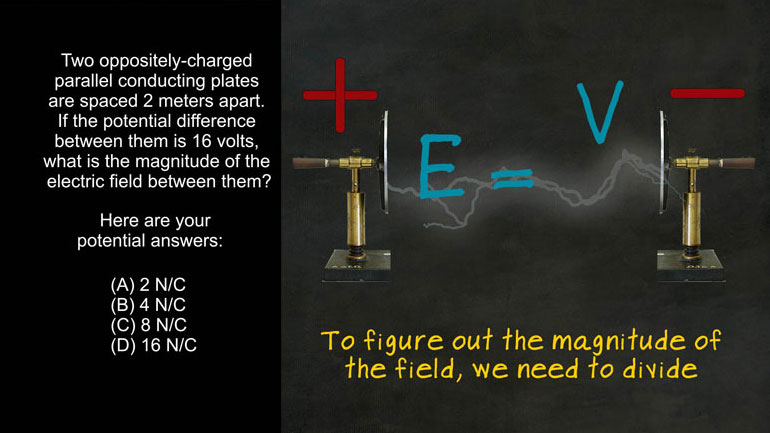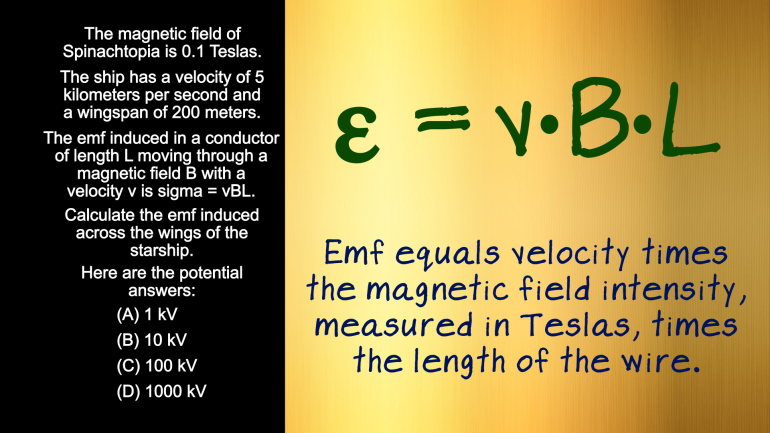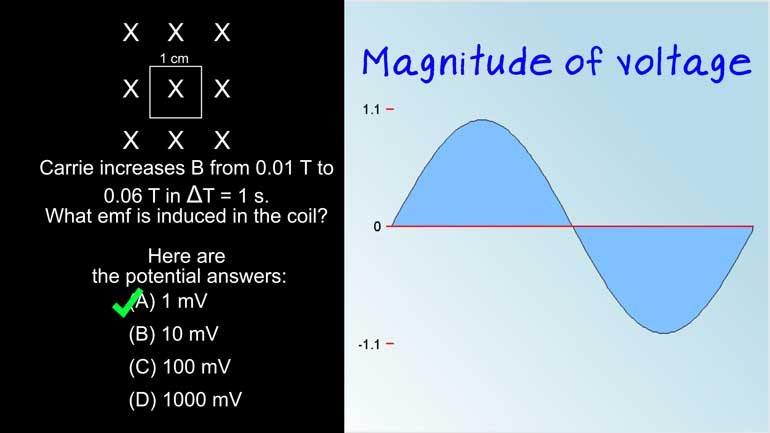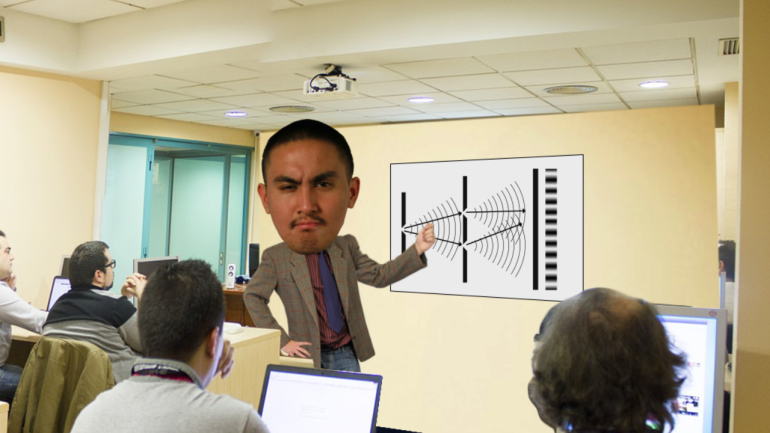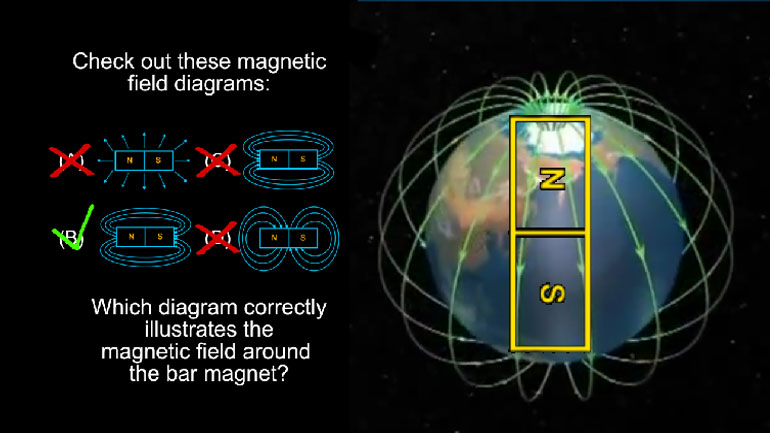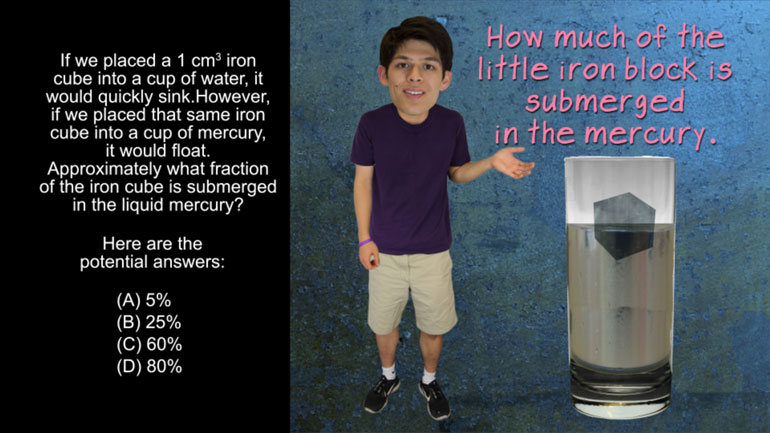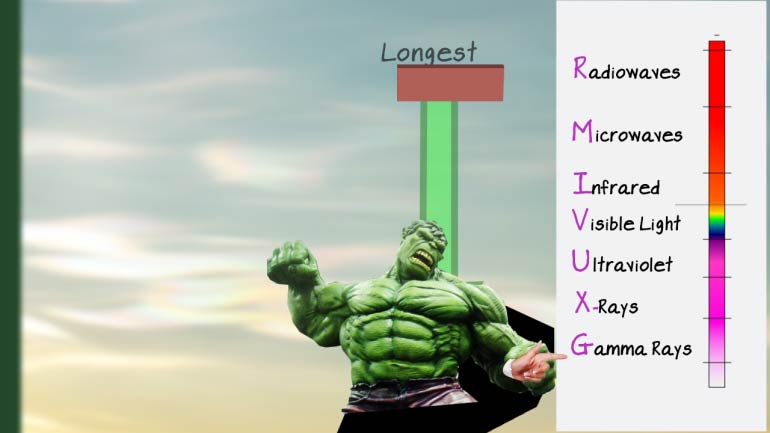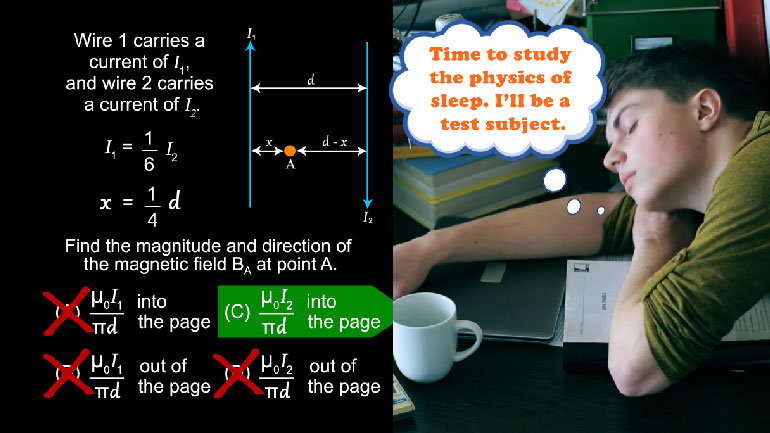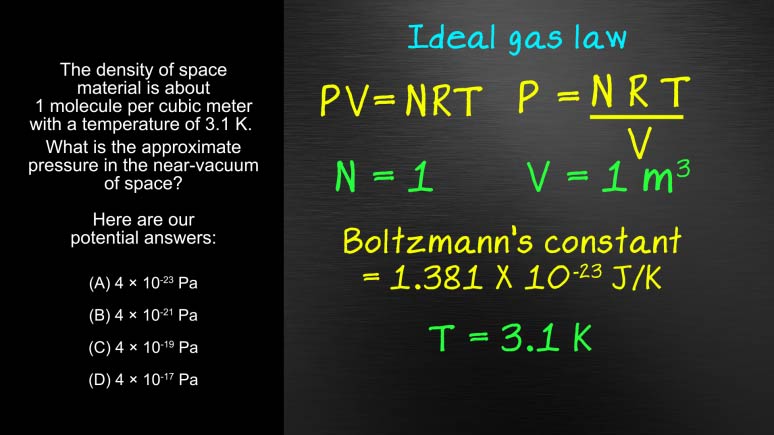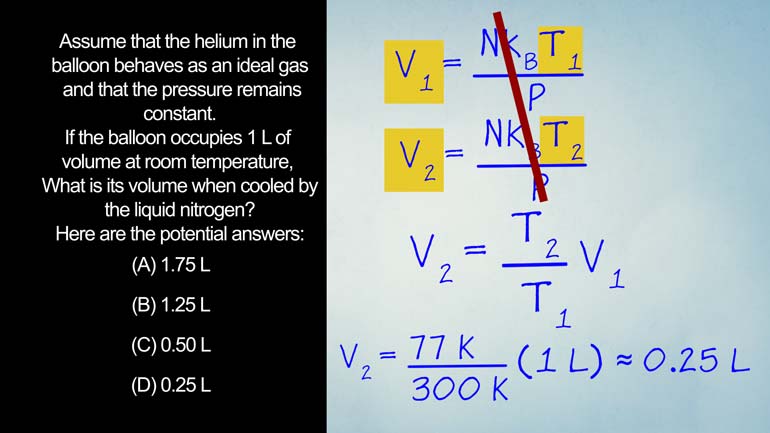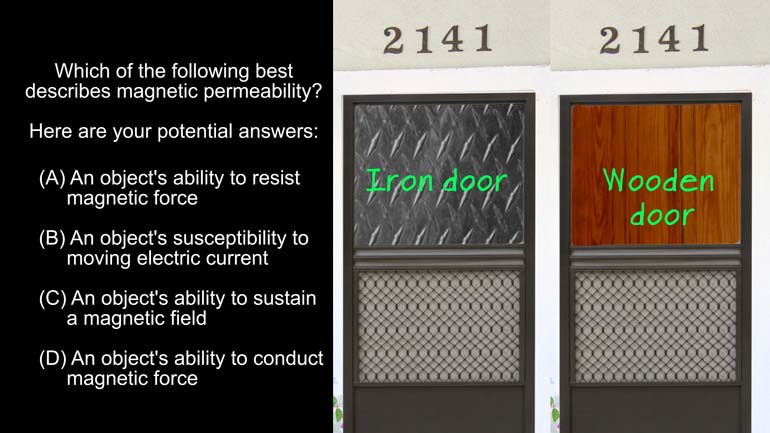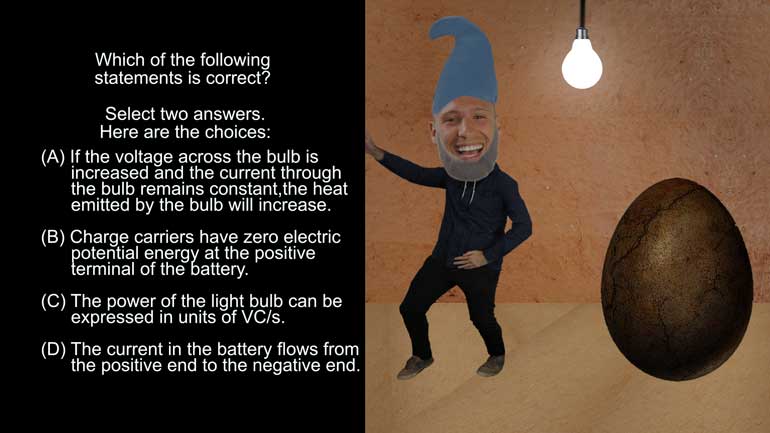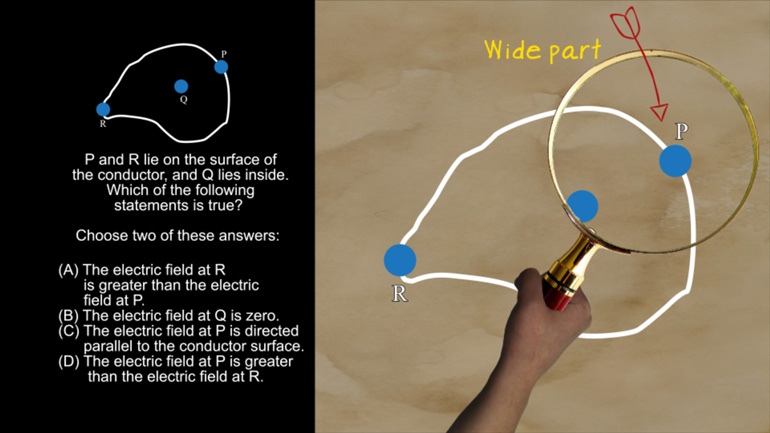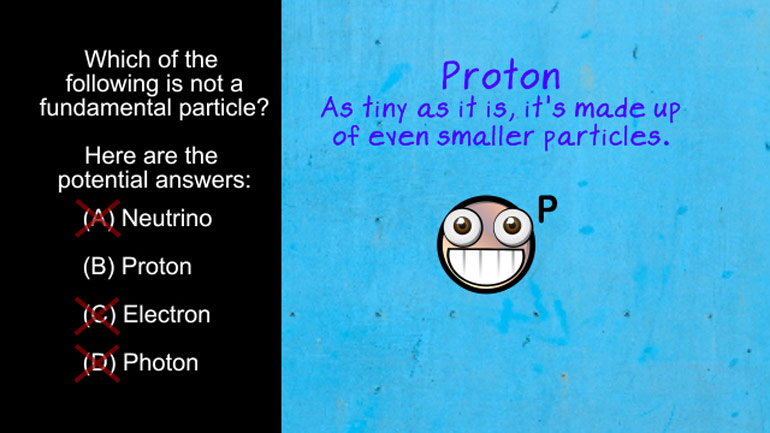ShmoopTube
Where Monty Python meets your 10th grade teacher.
Search Thousands of Shmoop Videos
AP Physics 2 Videos 59 videos
AP Physics 2: 1.1 Properties of Objects and Systems. What is the magnitude and direction of the conventional current in this wire?
AP Physics 2: 1.5 Properties of Objects and Systems. According to the Bohr's model of the atom, which of the following are true?
AP Physics 2: 1.1 Systems Interactions and Changes 166 Views
Share It!
Description:
AP Physics 2: 1.1 Systems Interactions and Changes. How much heat is dissipated due to air drag as the candy falls?
Transcript
- 00:00
Thank you here's Your shmoop du jour brought to you
- 00:05
by national candy day which is on november fourth We
- 00:09
consider the other three hundred sixty four days of the
- 00:11
year to just be well personal candy days to celebrate
- 00:14
national candy day Willy wonka planes to drop bags of
Full Transcript
- 00:17
sweets from an airplane Unfortunately he forgot to take into
- 00:20
account the heat produced by drag forces as the bags
- 00:24
fall through the air Well if the candy bags have
- 00:27
a mass of zero point four kilograms and reached terminal
- 00:29
velocity of twenty five meters per second how much heat
- 00:32
is dissipated due to air drag for every ten meters
- 00:36
that the candy falls fine here The potential answers While
- 00:42
dropping bags of candy from a plane sounds awfully generous
- 00:46
it also sounds like a good way to give people
- 00:48
brain trauma You've heard of ice cream headaches but candy
- 00:51
concussions are a new thing We'll assume willy gets lucky
- 00:54
and doesn't hit anyone directly let's think back to a
- 00:57
long time ago when we were learning about potential and
- 01:01
kinetic energies We know that potential energy equals mass times
- 01:04
height times gravity and we know that kinetic energy equals
- 01:07
one half mass times velocity squared How do we know
- 01:10
that Well we studied a bunch of this really cool
- 01:13
website Uh i can't remember the name but shoot It
- 01:16
was like shoe or smooth or something like that Anyway
- 01:20
the moment before an object falls all of its energy
- 01:22
is stored as potential energy and the moment before an
- 01:25
object hits the ground All of its energy is in
- 01:28
the form of kinetic energy moving in a perfectly frictionless
- 01:31
system The total energy at each of these moments has
- 01:34
to be equal and put it in terms of work
- 01:37
A force gravity is applied to an object the bag
- 01:40
of candy causing it to move the change in kinetic
- 01:44
energy equals the work done but we don't exist in
- 01:48
a perfectly frictionless system We exist on planet earth which
- 01:51
has an atmosphere when we're very grateful for it As
- 01:54
an object falls through the air it encounters friction also
- 01:57
known as drag because we're used to rubbing our hands
- 02:00
together deviously while hatching an evil seem way know that
- 02:03
friction causes some kinetic energy to transfer into heat energy
- 02:08
so now we have to throw heat into the equation
- 02:11
Now our equation shows that the change in potential energy
- 02:15
equals the change in kinetic energy plus heat When a
- 02:19
falling object reaches terminal velocity it has stopped accelerating which
- 02:25
means there's no more change in velocity which means that
- 02:28
there is no change in kinetic energy So at that
- 02:31
point all the work being done is creating heat not
- 02:34
changing the velocity All the change in potential energy equals
- 02:39
heat energy Now we can plug in the numbers get
- 02:42
an answer and go eat some candy and start this
- 02:44
whole questions giving us some serious sugar cravings once an
- 02:47
object has reached terminal velocity that he created in a
- 02:50
ten meter fall equals mass times gravity times the change
- 02:53
in height the mass of the bag equals zero point
- 02:55
Four kilograms Little round gravity up to ten meters per
- 02:59
second squared and a change in height is ten meters
- 03:03
Will the mass shows that the heat created equals forty
- 03:06
jewels Will answer D is correct We can see that
- 03:11
once an object reaches terminal velocity whatever the velocity is
- 03:14
doesn't affect the heat created Get the bags are falling
- 03:17
at one meter per second or one hundred meters per
- 03:20
second The work done is the same And if we
- 03:22
ever see a bag of candy plummeting out of the
- 03:24
sky and heading for a skull will take cover And
- 03:27
then we'll scavenge that candy off the ground like animals 00:03:30.67 --> [endTime] That's Just how we roll
Related Videos
AP Physics 2: 1.1 Properties of Objects and Systems. What is the magnitude and direction of the conventional current in this wire?
AP Physics 2: 1.5 Properties of Objects and Systems. According to the Bohr's model of the atom, which of the following are true?
AP Physics 2: 2.2 Properties of Objects and Systems. What will happen as the robot son moves the sponge near (but doesn't touch) the plate?
AP Physics 2: 2.4 Properties of Objects and Systems. How could you show the carnival barker an emission spectrum?

